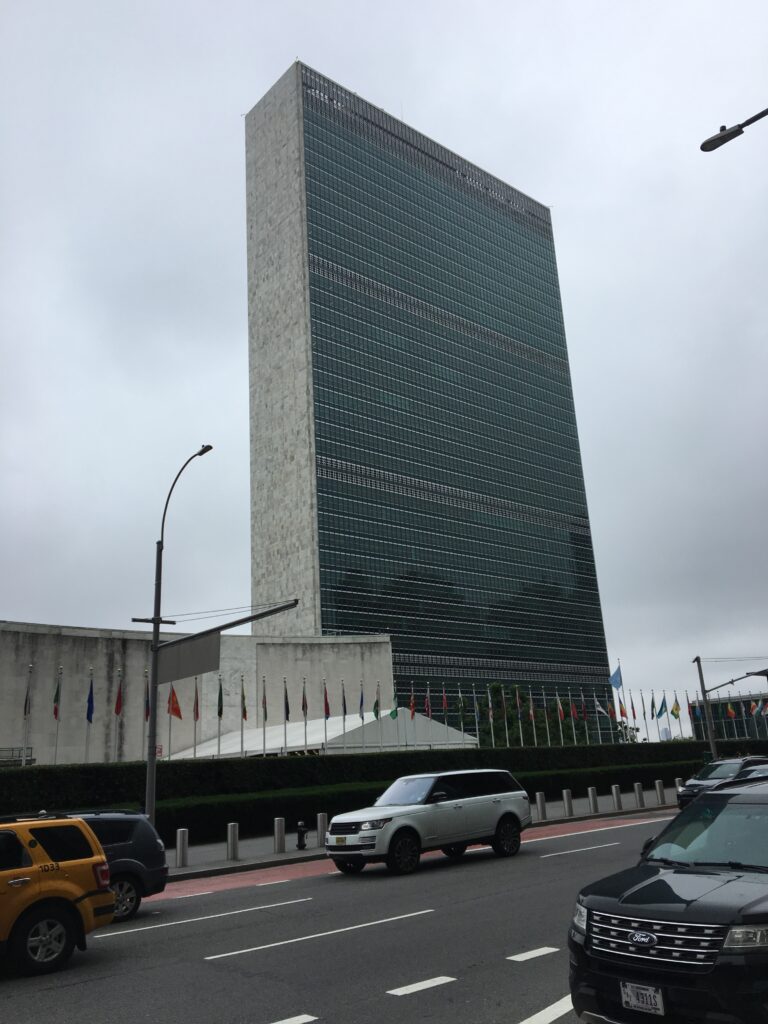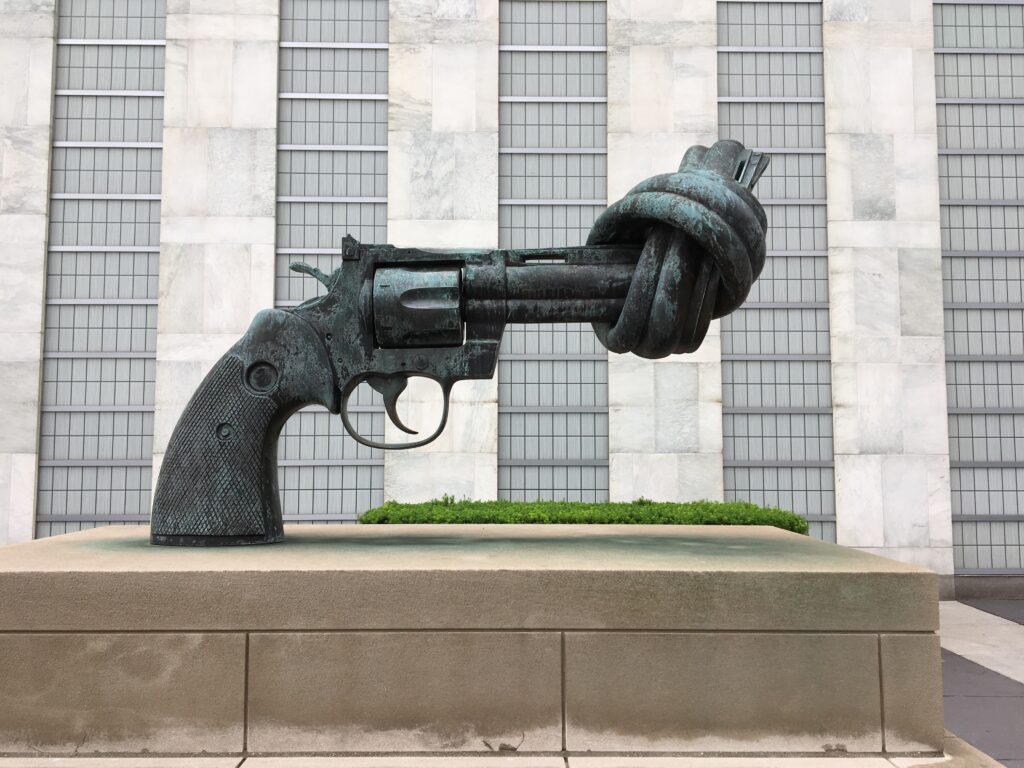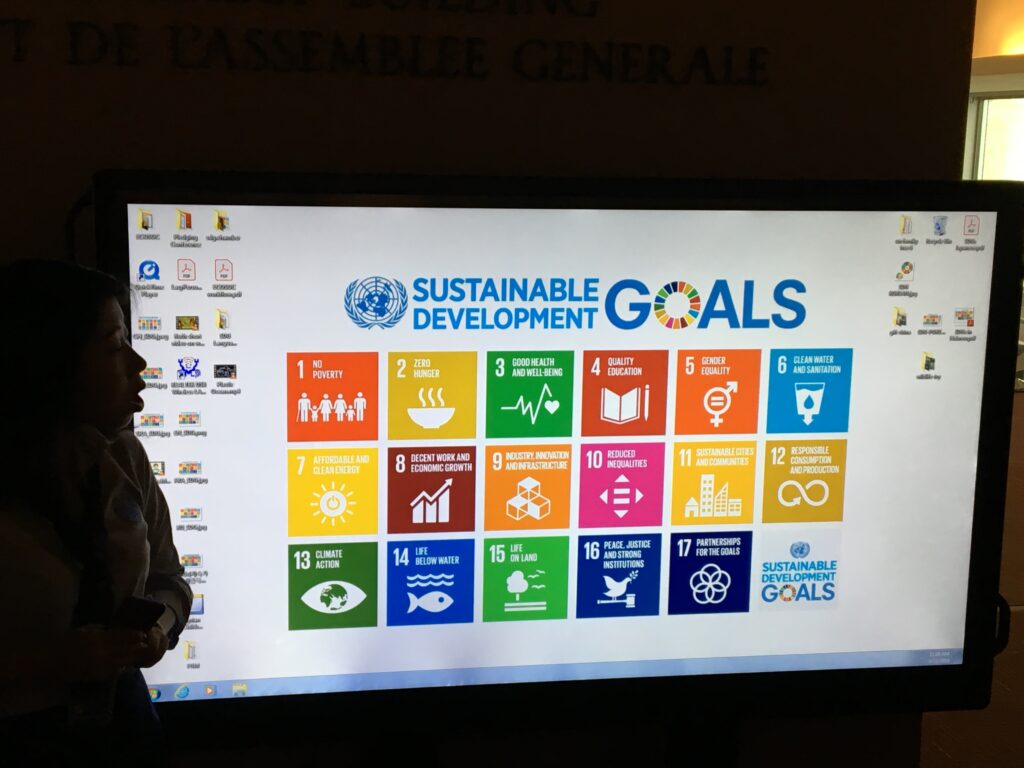The Charter establishing the United Nations was signed on June 26, 1945, at a meeting of the world’s nations in San Francisco, California. President Truman signed on behalf of the United States and, just six weeks later, on August 8, 1945, he signed the legislation ratifying the U.S. commitment to the UN—the first country to do so.

Why is the creation of the United Nations listed in a calendar of significant events in conservation and environmental matters? Over its 70+ year history, the United Nations has grown to encompass a vast network of treaties, conventions and organizations focused on sustaining nature.
The UN is most familiar to us as a global political organization. It operates out of an iconic campus in New York City. There the General Assembly meets to make decisions in support of world peace. Many people disparage the UN’s ability to help—but we have not experienced a world war since its creation.
The UN Charter lists the purposes and rationale for the creation of this splendid international organization. The organizations was founded “to save succeeding generations from the scourge of war…”—meaning, specifically, the scourge of the two world wars of the 20th Century. But it also was created “to promote social progress and better standards of life in larger freedom.”

The later rationale is where UN work on the environment and nature come in. The main structure of the UN includes “programmes” (the UN uses English English spelling, not American!) and “funds” to address specific issues. For the environment, these include three primary groups:
- UN Development Programme, incorporating sustainability as a fundamental element of economic and social development (headquartered in New York);
- UN Population Fund, which works to control human population growth (headquartered in New York);
- UN Environment Programme, working “to promote the wise use and sustainable development of the global environment” (headquartered in Nairobi).
The UN also includes a number of “specialized agencies” which are independent organizations under the general UN umbrella. For the environment and natural resources, these include the
- UN Educational, Scientific and Cultural Organization (UNESCO), which protects historical, cultural and natural sites around the world (headquartered in Paris);
- Food and Agriculture Organization (FAO), which fights hunger, not only through traditional agriculture but also through fisheries and forestry (headquartered in Rome);
- UN World Tourism Organization (UNWTO), which promotes sustainable, accessible and responsible tourism (headquartered in Madrid).

The UN also coordinates a large series of international conventions and treaties that promote global collaboration and standards on important environmental matters. The UN website lists 17 treaties on the environment, from climate to pesticides to whales and 9 treaties relating to the law of the sea.
The UN is also home to the coordinated development activities first conducted as the Millennium Development Goals from 2000-2015 and now as the Sustainable Development Goals for 2015-2030. The17 Sustainable Development Goals include 7 that relate directly to the environment and conservation (clean water and sanitation; affordable and clean energy; sustainable cities and communities; responsible consumption and production; climate action; life below water; and life on land).
Five years after the UN began, President Truman addressed the UN General Assembly. The points he made are even more valid today than in 1950:
“The United Nations represents the idea of a universal morality, superior to the interests of individual nations. Its foundation does not rest upon power or privilege; it rests upon faith. They rest upon the faith of men in human values–upon the belief that men in every land hold the same high ideals and strive toward the same goals for peace and justice….
I believe the people of the world rely on the United Nations to help them achieve two great purposes. They look to it to help them improve the conditions under which they live. And they rely on it to fulfill their profound longing for peace.
These two purposes are closely interwoven. Without peace, it is impossible to make lasting progress toward a better life for all. Without progress in human welfare, the foundations of peace will be insecure. That is why we can never afford to neglect one of these purposes at the expense of the other.”
References:
US Department of State. Address by President Harry S. Truman to the UN General Assembly, October 24, 1950. Available at: https://2009-2017.state.gov/p/io/potusunga/207324.htm. Accessed March 10, 2020.
United Nations. Charter of the United Nations. Available at: http://www.un.org/en/charter-united-nations/. Accessed June 28, 2017.
United Nations. Sustainable Development Goals. Available at: https://sustainabledevelopment.un.org/. Accessed March 10, 2020.
United Nations. Treaty Collection. Available at: https://treaties.un.org/pages/Treaties.aspx?id=10&subid=A&clang=_en. Accessed June 28, 2017.
United Nations. Funds, Programmes, Specialized Agencies and Others. Available at: http://www.un.org/en/sections/about-un/funds-programmes-specialized-agencies-and-others/. Accessed June 28, 2017.
